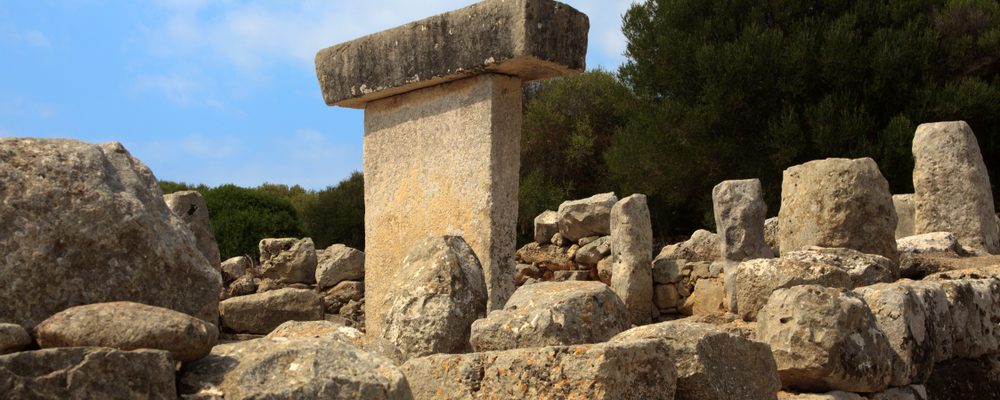Menorca is an archaeologist’s dream, boasting an amazing 1,574 ancient sites
Out of those are the mysterious 13 ‘taulas,’ (which means ‘table’ in Catalan) that some people compare to Stonehenge.
The prehistoric people who erected them are referred to as ‘Talayots’ or ‘Talaiots’ and the period is called ‘Talaiotic.’
The prehistoric structures are in standing ‘T’ formations, with vertical stones topped with a large flat stone. Other stones form a ‘U’ shape around the base. They date from possibly 2000-1000 B.C. What were they, though? There are 3 main theories of their significance to the Talaiotic culture.
A Religious Prayer Site
A bronze bull god was found among other seemingly religious artifacts. The first of the Menorcans originally came from Crete, which held the bull in esteem. There’s also the fact that in front of each taula archaeologists found suggestions of a sacrificial pit
A Place for Healing
An inscription found in one of the taula’s reads: ‘I am Imhotep, the god of medicine.’ A bronze horseshoe was also discovered, which is the symbol of Asclepius, the ancient Greek god of medicine. The structures could have been focused on the Centaurus constellation to increase the healing of the stones.
The ‘Fenn Moon’
Waldemar Fenn became an expert on the taulas. After he discovered several constellations drawn in a cave, he compared it to the placement of the stones. Over time, he theorized that the 12 large structures and the smaller 13th followed the movement of the moon – representing the 12or 13 yearly full moons.
Of course, we’ll never know for certain which of these theories is correct about the Talaiotic culture or the Talaiots’ beliefs. But we do know that the mystery enriches the experience for those who visit Menorca.


